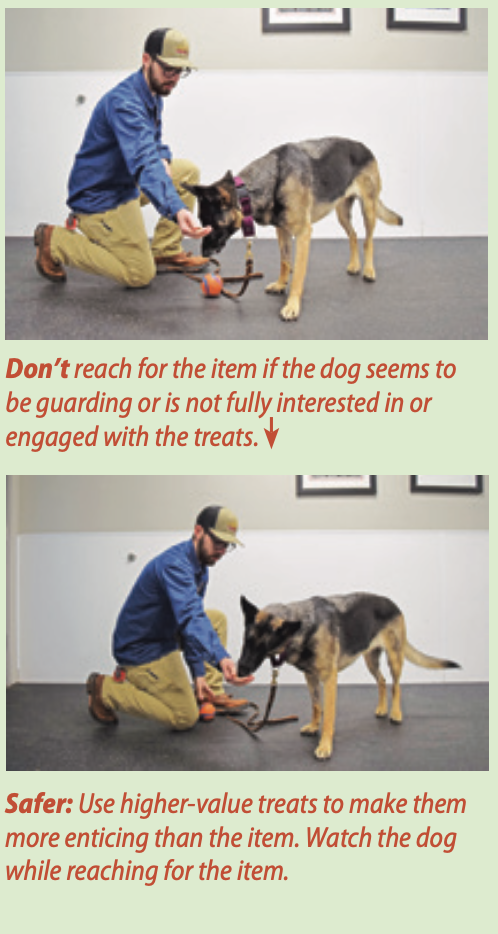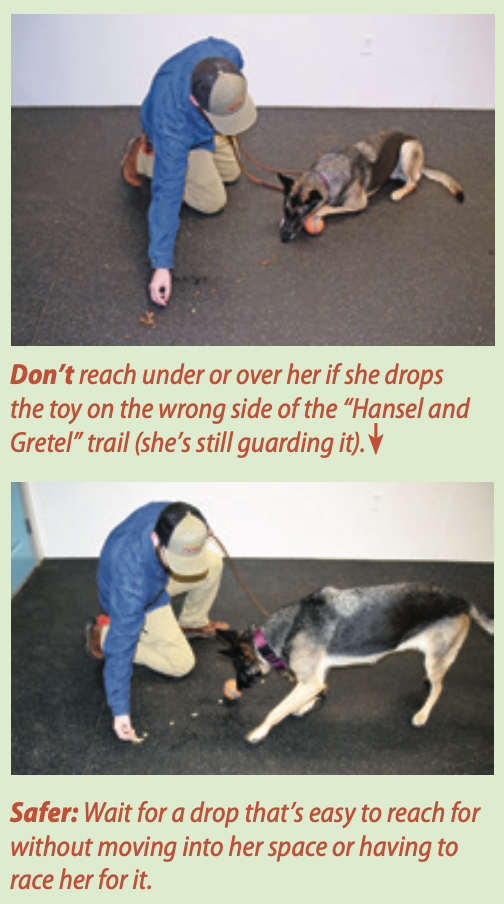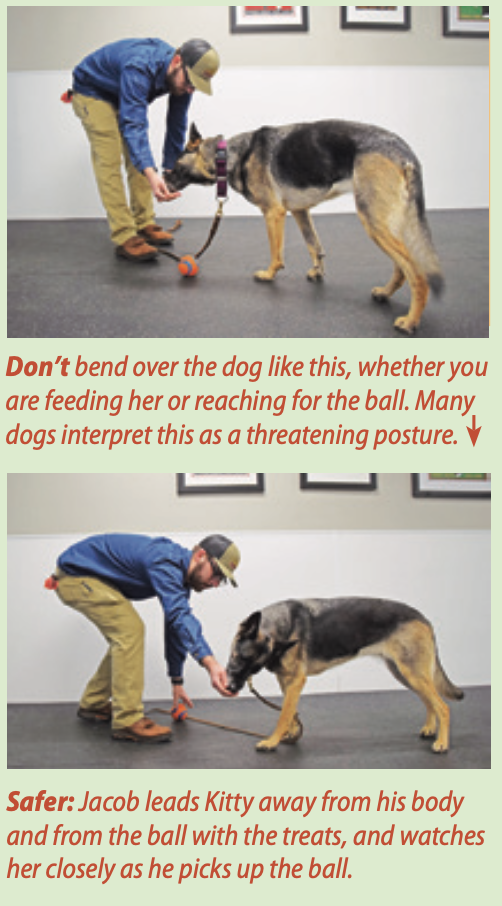Start with your dog on a leash and either stand on the end of the leash or tether him to something solid so he can’t leave with the item at any point in the “game.”
1. Say “Take it!” and give the dog a low-value object – something he will easily and willingly give up in exchange for a high-value treat.
2. Offer him your high-value treats – close enough that he can sniff then, but don’t try to push them into his mouth. (Anything that resembles coercion will likely increase his resistance.) Have a large enough supply of high-value treats that it will take him a little while to eat them all. Do not use a cue yet.
3. If he drops the low-value item (in order to explore or take the higher-value treats you offered), click your clicker (or use a mouth click or verbal marker) and, while you keep him occupied nibbling at the high-value treats in one hand, pick up the low-value object with your other hand and hide it behind your back. You must use two hands for this! If you let him eat the high-value treats and then race him back to the object, you’re likely to lose the race and you might elicit resource-guarding.

As soon as he finishes eating the treats in your hand, bring out the object from behind your back, say “Take it!” and give it back to him. This teaches him that he doesn’t lose the object – that he can trade with you and then get it right back. This will make him more willing to trade with you again in the future. It’s a win/win for him!
If he doesn’t show any interest in taking the low-value object after you’ve traded it for high-value treats, you may need to start by giving him a slightly higher-value object and/or using lower-value trade-treats.
If he doesn’t drop the item, make a short “Hansel and Gretel” trail of treats under his nose and then trailing a foot or so off to the side. Engage his mouth with the treats in your hand after he follows the trail, while you pick up the item with your other hand.
If he still doesn’t drop the item, you need to start by
giving him an even lower-value item and/or using far higher-value treats in your hand. (Think meat, not dry cookies.)

4. When you can predict that he will always drop the item when you offer your treats, you’re ready for the next step. First, give your cue (“Trade!”), pause for a few seconds, and then do what you’ve been doing: offer the treats, click when he drops the item, and pick up the item with your free hand while you keep his mouth busy nibbling treats from your hand.
5. After several repetitions, sometimes pause a few seconds longer before offering your treats. Your goal is to get him to drop the object when you say “Trade!” – before you offer the treats. When he will do this reliably, it means you have the behavior “on cue” – he drops the object because he heard and understood the cue, not just because you stuck high-value treats under his nose.
Thanks to Jacob Paxson of The Canine Connection in Chico, California, who demonstrated the do’s and don’ts of the “Trade” protocol.







I think this was really interesting. I’m definitely trying this with my dog so thank you for that.